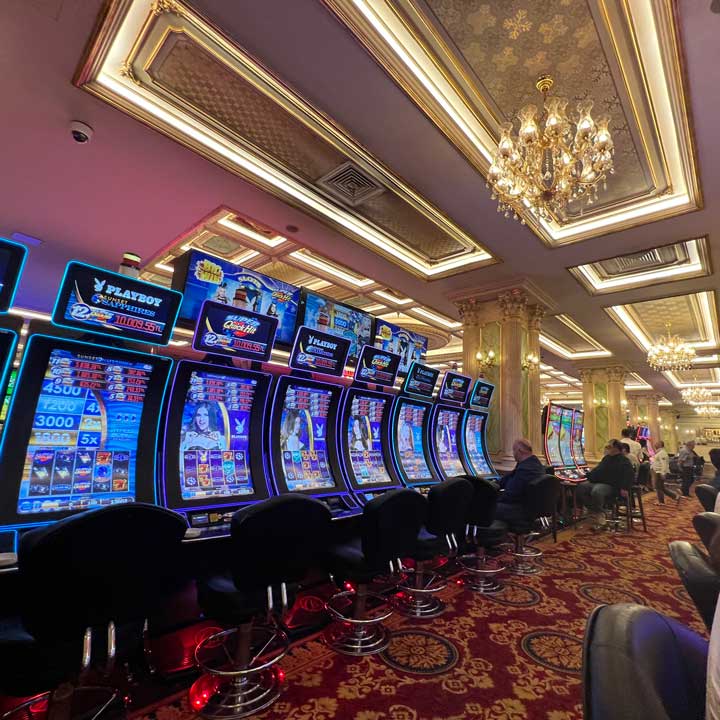
Casino experiences have long captivated people’s attention, drawing gamblers into a world filled with chance, planning, and the allure of excitement. Each experience is carefully crafted not just for enjoyment, but also to elicit specific emotional responses that keep participants involved and invested. Understanding the reasons behind these designs reveals much about how human psychology plays a vital role in the gaming experience.
From the vivid lights and lively sounds to the intricate layering of rules and incentives, casino games are designed to create an atmosphere of thrill and eagerness. Game designers leverage mental cues to influence participant behavior, whether through the use of winning opportunities, close-call situations, or social interactivity. By examining these elements, we can better appreciate how casino games fulfill not just a want for entertainment, but deeper psychological needs for excitement and hazard.
Understanding Gamer Behavior
Casino games are designed with a profound understanding of gamer psychology, which is crucial for luring and keeping players. The rush of the game, alongside the expectation of winning, establishes a strong attraction. Game designers utilize elements like sonic elements, dynamic graphics, and engaging gameplay to capture attention and generate emotional responses. 69VN These sensory effects enhance the total environment, making players feel more attached in the game.
Another notable aspect of player behavior is the notion of risk versus reward. Casino games often weigh risky situations with the potential for substantial rewards, which can lead to the occurrence known as near-miss effect. When players come close to winning, the brain produces dopamine, strengthening their behavior and prompting them to continue playing in pursuit of that fleeting win. This cycle of anticipation and disappointment plays a crucial role in how games are structured and advertised.
Lastly, community aspects also play a pivotal role in player behavior at casinos. Many games are made to be played in pairs or with other players, nurturing a sense of belonging and communal experience. The social interaction inherent in games like blackjack enhances enjoyment and can culminate in longer play sessions. Designers capitalize on this by creating environments that invite players to linger, connect, and return, making the overall casino experience more appealing.
The Role of Visuals and Sound
Visuals and sound play a crucial role in elevating the gambler’s experience within gambling games. Designers utilize bold colors, striking graphics, and engaging animations to attract players’ attention and hold their interest. The use of motifs, such as adventure or luxury, helps create an engaging atmosphere that transports players into a different world. By connecting to the senses, these elements add to a heightened emotional response, encouraging players to engage more profoundly with the games.
Sound design is just as important in enhancing the experience of gambling games. The mix of ambient music, sound effects for successful combinations, and environmental noises creates an auditory landscape that keeps players enthralled. Sounds associated with victories, such as chiming bells or festive music, evoke feelings of excitement and satisfaction, encouraging players to continue playing. These audio cues are strategically placed to enhance the thrill of the game and create a more engaging experience.
Additionally, the synchronization of imagery and sound is important for supporting the game’s overall concept and mood. Each element should coordinate seamlessly to create a unified experience that draws players in. The effective use of this integration not only improves user satisfaction but also boosts the likelihood of return play, as players become more invested in the captivating world that the gambling games offer. Nạp tiền 69vn This thoughtful combination of imagery and audio ultimately enhances player engagement and commitment.
Incentive Structures and Engagement
The creation of casino experiences significantly relies on reward systems to keep participants involved and returning for additional experiences. These structures are rooted in behavioral theories that take advantage of human behavior and motivation. Players are often motivated by the thrill of winning, which is supported by immediate responses through the game structure’s mechanics. This prompt satisfaction not only improves the gaming experience but also cultivates a sense of achievement, prompting players to keep playing in hopes of greater rewards.
Gaming establishments implement various incentive systems, including jackpots, extra rewards, and increased rewards, to engage players. These elements create a layer of thrill that maintains engagement. Additionally, the randomness of outcomes plays a crucial role in sustaining interest. The variable reward system, where wins are random but occur often enough, keeps participants on edge and driven to keep playing. This loop of anticipation and anticipation is foundational to the effectiveness of casino games.
Furthermore, community aspects, such as competitive events and multiplayer features, boost the participation factor by tapping into the desire to compete of players. The shared experience of playing with others can intensify the thrill of success and create a sense of community within the casino. By integrating these community elements with efficient reward systems, gambling experiences don’t just offer fun but also foster a stronger connection among participants, solidifying their loyalty to the overall experience.
